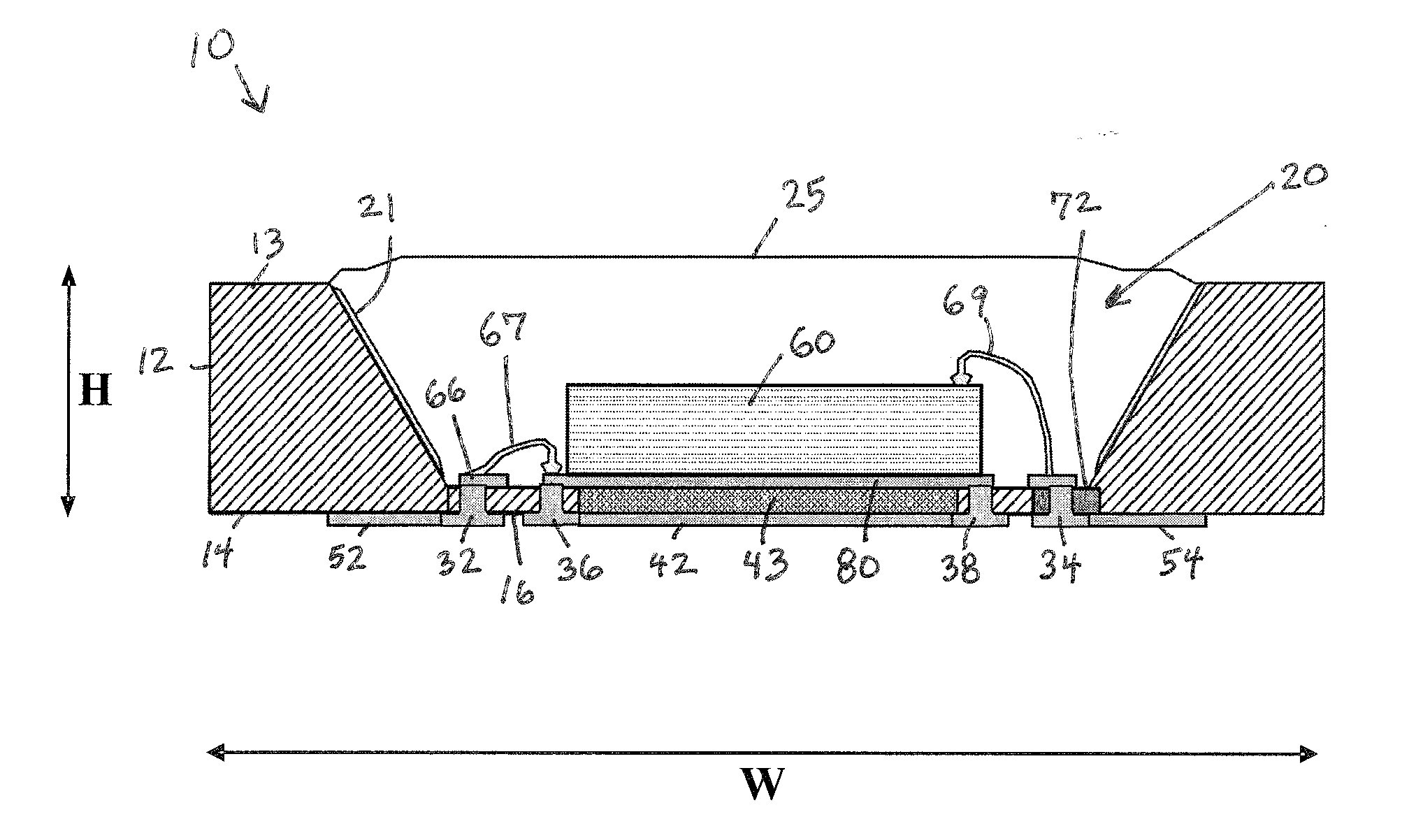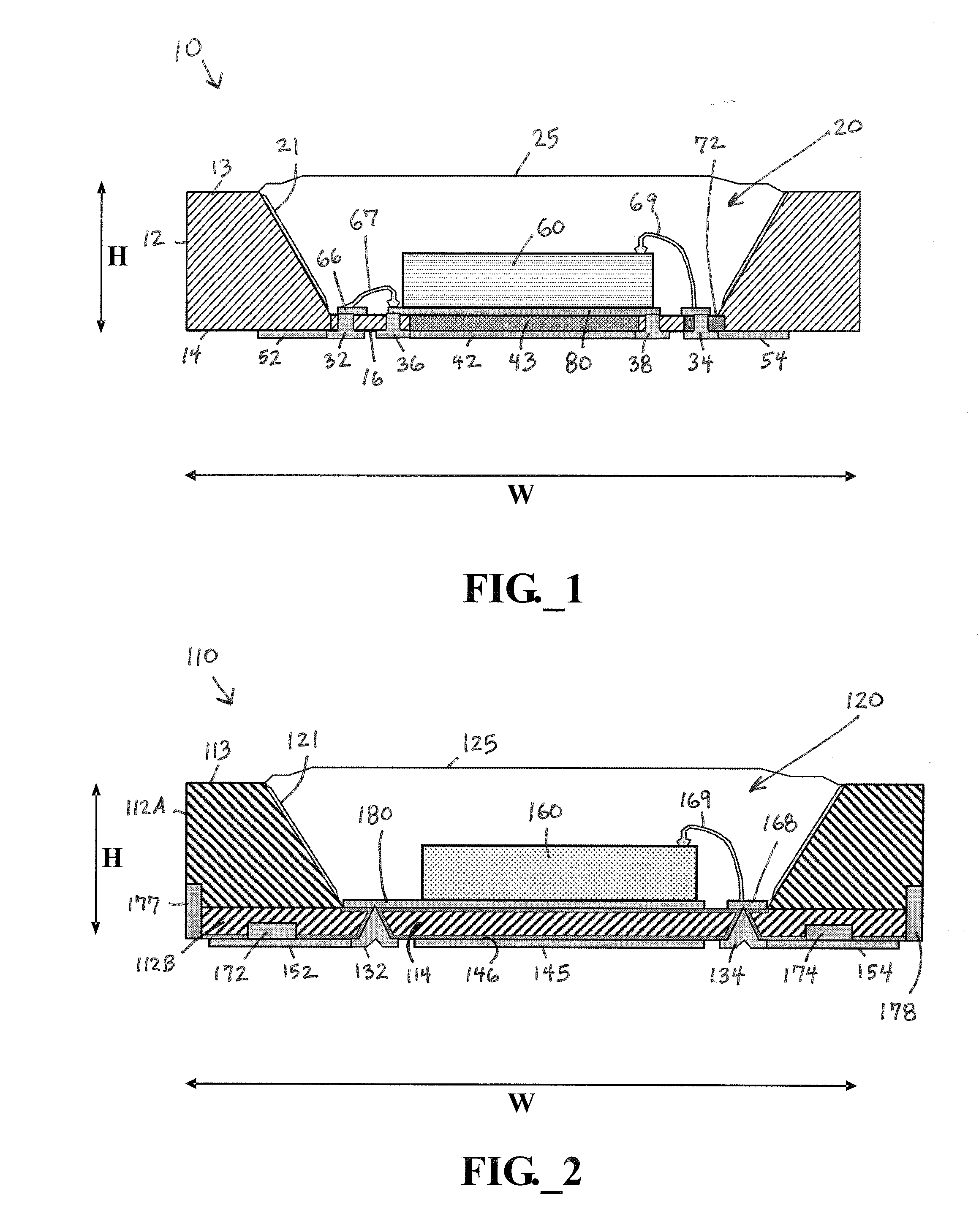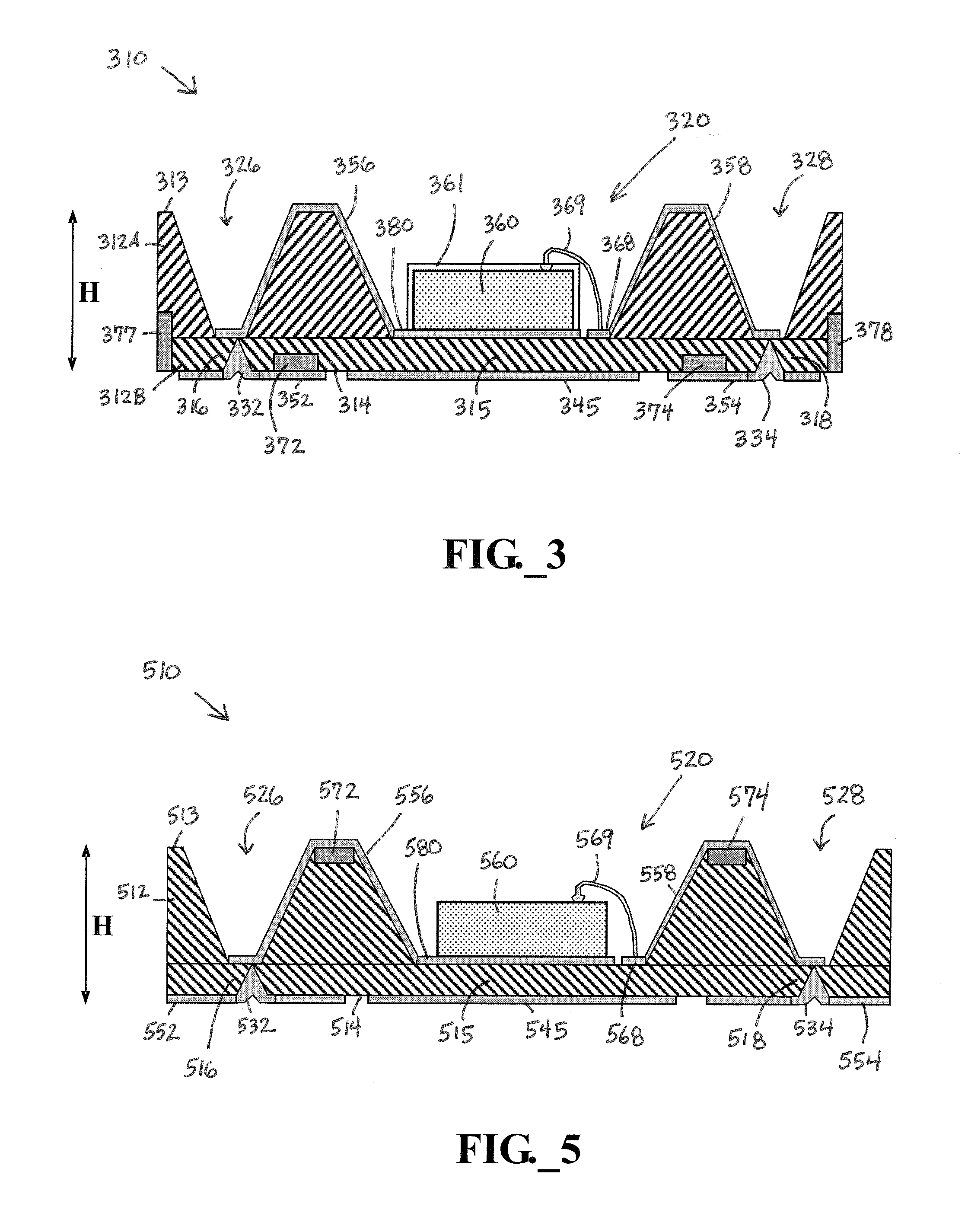Microscale optoelectronic device packages
- Summary
- Abstract
- Description
- Claims
- Application Information
AI Technical Summary
Benefits of technology
Problems solved by technology
Method used
Image
Examples
first embodiment
[0058]FIG. 1 is a cross-sectional schematic view of at least a portion of a microscale optoelectronic device package 10 according to the present invention, the package 10 including an emitter diode 60 disposed within a reflector cavity 20 bounded in part by a membrane portion 16 of a substrate 12. The membrane portion 16 defines a plurality of microvias 32, 34, 36, 38 and includes an ESD diode 72 disposed along the membrane portion 16. As illustrated, the microvias 32, 34, 36, 38 have substantially vertical sidewalls, such as may be formed with an anisotropic etch through the substrate 12; however, as indicated previously, such microvias may be formed of any convenient or desirable size or shape. The substrate 12 includes a front or upper surface 13 (along which radiation is transmitted outward from the emitter diode 60) and an opposing backside or lower surface 14. The reflector cavity 20 has a reflective material 21 (e.g., aluminum or other metal) deposited along the side walls th...
second embodiment
[0062]FIG. 2 is a cross-sectional schematic view of at least a portion of a microscale optoelectronic device package 110 the package 110 including ESD diodes 172, 174 disposed along a backside surface 114 of a substrate composed of substrate layers 112A, 112B, and an emitter diode 160 disposed within a reflector cavity 120 (having a deposited reflective material 121) bounded in part by a membrane portion 115 of the substrate. The membrane portion 115 defines a plurality of microvias 132, 134 disposed on either side of a thermal contact pad 145 beneath the emitter diode 160. Since the microvias 132, 134 are spatially separated from the thermal contact pad 145, the thermal contact pad 145 can be electrically isolated. In the case of a silicon substrate, electrical isolation is achieved by the formation or addition of an insulating surface layer 146 (e.g., silicon dioxide) that coats most or all of the substrate surface prior to the metallization of the microvias and contact pads. Sin...
third embodiment
[0066]Referring to FIG. 3, such figure provides a cross-sectional schematic view of at least a portion of a microscale optoelectronic device package 310 the package 310 including ESD diodes 372, 374 disposed along a backside surface 314 of a substrate composed of substrate layers 312A, 312B. An emitter diode 360 having a phosphor layer 361 deposited thereon is disposed in a reflector cavity 320 bounded in part by a first membrane portion 315. The substrate further defines additional cavities 326, 328 that are non-adjacent to the emitter diode 360 and bounded by second membrane portions 316, 318 of the substrate that define microvias 332, 334 located remotely from the emitter diode 360. The upper substrate layer 312A is preferably formed of a readily etchable material, such as N-type silicon, whereas the lower substrate layer 312B is preferably formed of a less-etchable material, such as P-type silicon, to serve as an etch stop in formation of the cavities 320, 326, 328, such that t...
PUM
 Login to View More
Login to View More Abstract
Description
Claims
Application Information
 Login to View More
Login to View More - R&D
- Intellectual Property
- Life Sciences
- Materials
- Tech Scout
- Unparalleled Data Quality
- Higher Quality Content
- 60% Fewer Hallucinations
Browse by: Latest US Patents, China's latest patents, Technical Efficacy Thesaurus, Application Domain, Technology Topic, Popular Technical Reports.
© 2025 PatSnap. All rights reserved.Legal|Privacy policy|Modern Slavery Act Transparency Statement|Sitemap|About US| Contact US: help@patsnap.com



